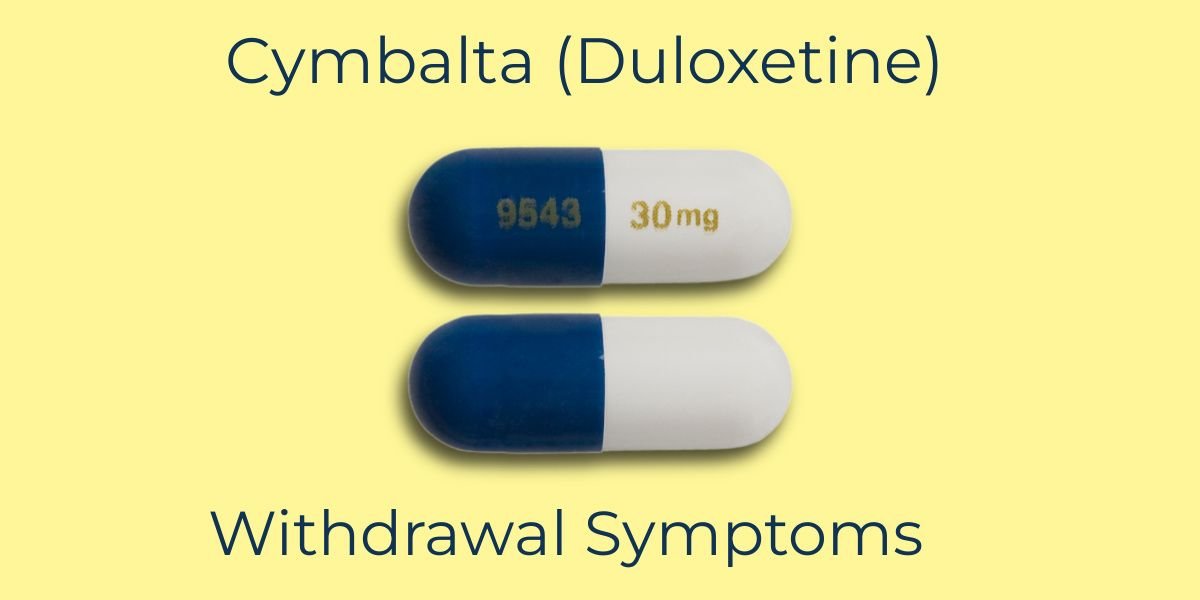Amitriptyline withdrawal occurs when the drug is stopped or reduced too quickly. As with other tricyclic antidepressants (TCAs), the brain adapts to its presence over time, and sudden changes can trigger a withdrawal syndrome. Although initially licensed for major depressive disorder, amitriptyline is now commonly prescribed at low nightly doses (typically 10–25 mg) to manage chronic neuropathic pain and improve sleep continuity. [1][2]
Even these lower doses, used off-label for non-psychiatric indications, can still provoke withdrawal effects when discontinued abruptly.
Abrupt cessation can trigger a well-documented withdrawal syndrome characterized by a rapid recurrence or intensification of the original symptoms, accompanied by additional symptoms such as dizziness or "brain zaps" within days of stopping or significantly reducing the dose. [3]
- Withdrawal symptoms usually begin a few days after dose reduction and typically peak soon after. These effects often last about 1–3 weeks.
- Common withdrawal effects include dizziness, nausea, headache, insomnia, fatigue, and mood changes (irritability or anxiety). These may be mistaken for a relapse of depression, so monitoring by a doctor is essential.
- Even with a slow taper, withdrawal can occur. To ease symptoms, clinicians recommend reducing the amitriptyline dose slowly under medical guidance, with close monitoring for persistent or severe side effects.
-Withdrawal_-Symptoms,-Timeline,-and-Care.jpg?v=1753876757)
Understanding amitriptyline withdrawal
Amitriptyline works by affecting the neurotransmitters serotonin and norepinephrine. After taking it regularly, the body adjusts to its presence. The brain needs time to rebalance when the medication is reduced or stopped. If reduction is too fast, a withdrawal syndrome can result. [4] As one report notes, abruptly stopping tricyclic antidepressants “can also be detrimental… triggering withdrawal phenomena”. [3][5]
Symptoms treated by amitriptyline, like depression, anxiety, or pain, may temporarily worsen. You might also experience new issues like dizziness, brief electric shock-like sensations in the brain known as ‘brain zaps,’ or flu-like aches. [6]
This withdrawal syndrome is not the same as a relapse of depression or pain. A relapse is a return of the underlying condition over time, whereas withdrawal effects are a temporary reaction to stopping the drug. Recognizing this difference is important. Some medical experts now prefer to call this a “withdrawal syndrome” rather than “discontinuation” to emphasise that it is a genuine physiological effect of the drug leaving the body, a point underscored in recent reviews and the Maudsley Deprescribing Guidelines. [7][8]
Amitriptyline withdrawal symptoms
When amitriptyline withdrawal occurs, symptoms can be both physical and emotional.
Physically, people often report: [9]
- Dizziness
- Headaches
- Nausea
- Vomiting
- Diarrhea
- Muscle aches
- Flu-like symptoms
- Brain zaps
Headache and lightheadedness are common, as the body readjusts to lower serotonin and norepinephrine levels. People may also experience: [1][9]
- Sleep disturbances (insomnia, vivid dreams)
- Sweating
- Tremors
- Cholinergic rebound symptoms—effects due to changes in nerve signaling, like bladder discomfort
Emotionally, withdrawal can cause: [9]
- Irritability
- Anxiety
- Agitation
- Mood swings
Differentiating withdrawal from relapse
Because some symptoms overlap with depression (fatigue, mood changes) or pain, it can be hard to tell withdrawal apart from relapse. Timing and symptom type help distinguish them. Withdrawal symptoms typically start within a few days of reducing or stopping amitriptyline [10] while a relapse of depression, insomnia, or pain usually builds gradually.
Withdrawal from amitriptyline often includes intense physical sensations that are not typical of depression or neuropathic pain. If the symptoms begin shortly after a dose change and include these physical effects, they are likely due to withdrawal, not the illness coming back. [11]
According to a systematic review, discontinuation symptoms may be easily misidentified as signs of impending relapse. [10] To avoid confusion, patients and doctors should watch the timeline: withdrawal symptoms should start quickly after stopping, peak soon, and then improve over weeks. In contrast, a true relapse of depression would not usually resolve without treatment and would lack distinctive physical withdrawal signs.
Amitriptyline withdrawal timeline
- Within 1-3 days (first symptoms): Most tricyclic-antidepressant withdrawals start within a few days of stopping the drug or markedly reducing the dose. [11]
- Day 3 to ~ Day 7 (peak intensity): Symptom clusters usually reach their worst in the first week. [10]
- Week 1 to Week 3 (typical resolution): American Family Physician review reports that most discontinuation symptoms are mild and “last one to two weeks,” resolving by week three in average cases. [11] A placebo-substitution trial in long-term amitriptyline users likewise found withdrawal reactions confined to “the first few weeks” and then disappearing. [12]
- Beyond Week 3 (uncommon, prolonged course)
Managing withdrawal symptoms
Withdrawal symptoms from amitriptyline usually ease over days to a few weeks as the body re-adjusts; most cases improve without pharmacological intervention. [11] General self-care, adequate sleep, hydration, light meals, gentle activity, and relaxation techniques can help reduce discomfort during this period. [13] Over-the-counter remedies, like acetaminophen for headaches or muscle aches, can help. However, always consult your doctor first to avoid drug interactions. [11]
Close supervision by the prescribing clinician is essential. If symptoms are severe, clinical guidelines recommend pausing the taper or briefly increasing the dose, then reducing more slowly, such as in 10% increments every 1–2 weeks. [8] In some cases, clinicians may switch to a longer-acting antidepressant, usually fluoxetine, to smooth the withdrawal process before tapering further, although evidence for this approach remains limited. [14]
Patients must never restart or adjust amitriptyline on their own. If you experience severe withdrawal effects, worsening depression, intense anxiety, or suicidal thoughts, seek immediate medical help or urgent clinical review. [15] Suicidal ideation, in particular, is a medical emergency: call a crisis line (e.g., 988 or 911), visit the nearest emergency department, or contact your healthcare provider immediately. Do not wait for symptoms to worsen.
How to safely taper off amitriptyline
A gradual taper is the key to minimizing amitriptyline withdrawal. Guidelines for antidepressants recommend reducing the dose in small steps. [8][16]
While schedules vary, many clinicians lower the dose by ≈ 10–25 % every 1–2 weeks. [8] For instance, a patient taking 100 mg daily might drop to 90 mg for a week or two, then to 80 mg, and so on. Since everyone responds differently, the tapering plan should be tailored to your needs and followed precisely.
Your doctor may adjust the pace if you develop strong withdrawal effects. Tapering too quickly is a common cause of severe symptoms, so patience is crucial. If you notice troubling symptoms, report them to your provider; they may slow the taper or give other advice to help.
After the final dose, continue to watch for withdrawal signs for a few weeks. Some people feel well shortly after finishing, while others may have mild symptoms. If symptoms persist beyond a few weeks or become very troublesome, talk with your doctor about possible treatments or whether a brief reinstatement of a low dose is needed.
Long-term considerations
For most people, long-term outcomes are good once withdrawal is complete. The brain chemistry gradually normalizes over weeks to months, and the withdrawal effects fade. Continue to monitor your mood and health; if new depression or pain symptoms appear and persist, follow up with your doctor to consider other treatment options.
It’s worth noting that mild symptoms may recur or persist longer in some rare cases. [10] This might happen if the taper is rapid or an individual is especially sensitive. Keeping stress low and engaging in healthy habits (regular sleep, exercise, and social support) can promote symptom normalization. Also, remember that feeling unusually tired or “foggy” for a few weeks post-withdrawal can be part of the process; if concerns continue, a healthcare professional can investigate and support you.
Finally, consider that managing mental health is holistic. Withdrawal may coincide with other life changes or therapy shifts. It may help to maintain psychotherapy or counseling during and after tapering. A new treatment plan might be needed if your underlying condition returns. Your doctor can guide long-term care, whether that involves trying a different antidepressant, non-drug therapies, or monitoring without medication.



